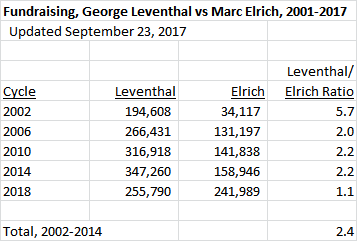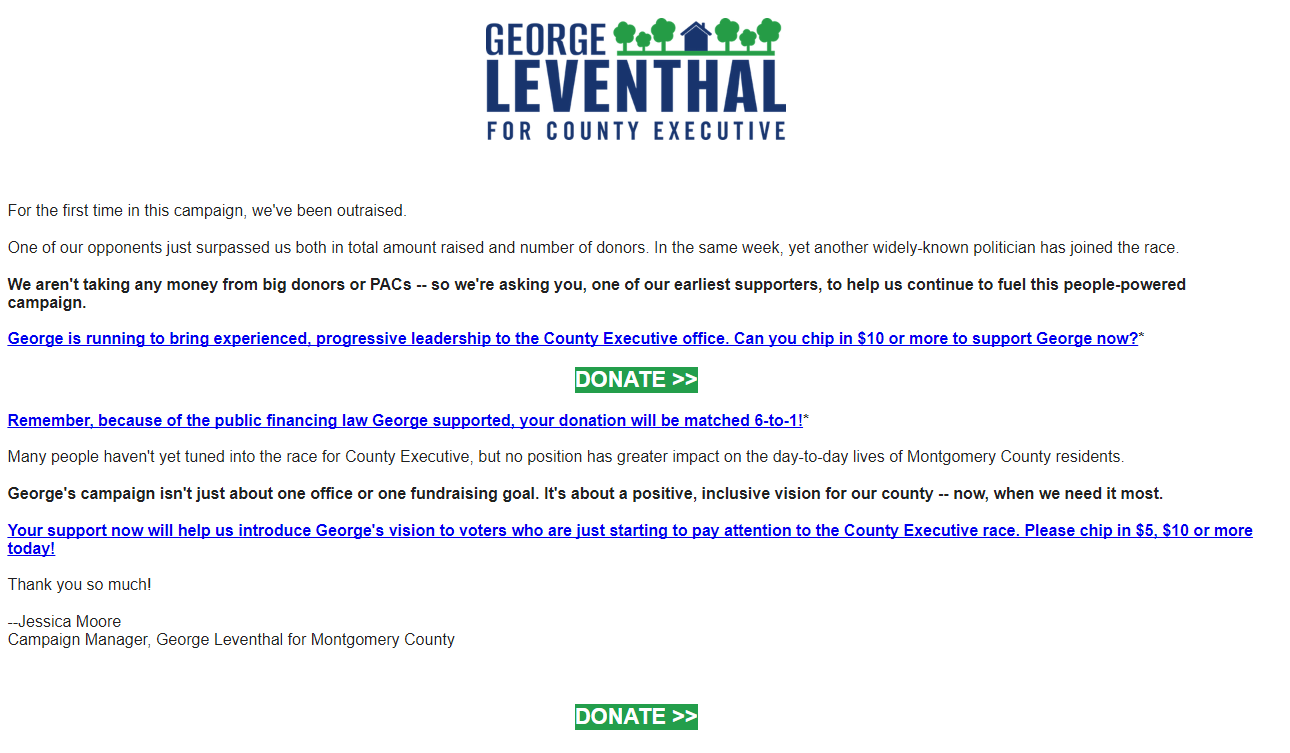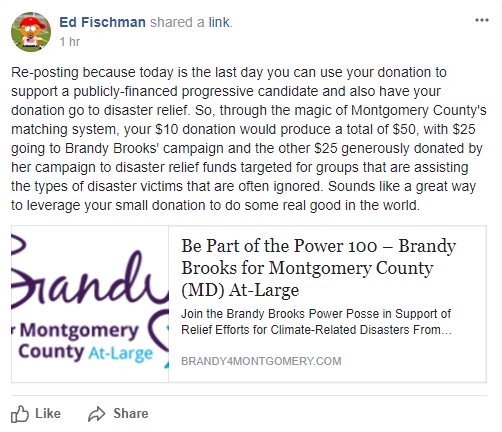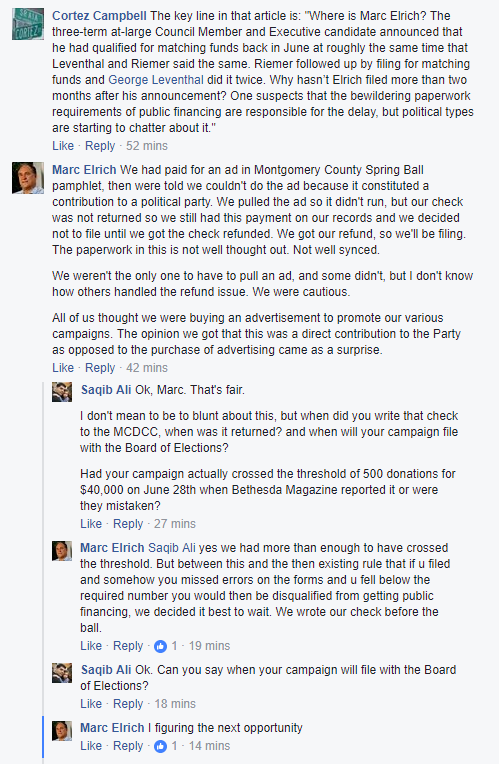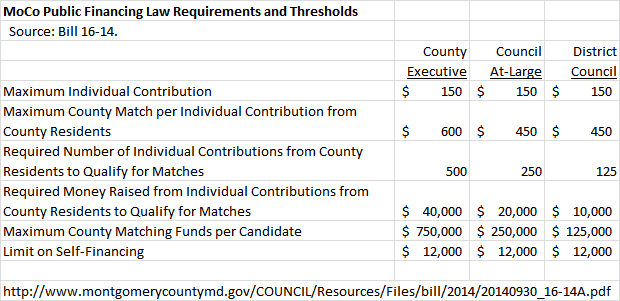By Adam Pagnucco.
In Part Two, we explored some reasons why a candidate may want to enter public financing. Today we will look at some factors that would argue for staying out.
Reasons to Stay Out
- You Already Have Money
In January 2014, then-District 20 Delegate Tom Hucker had a war chest of $146,905. He had accumulated it by raising money continuously and not having serious challengers since he was first elected in 2006. Hucker, whose progressive credentials are beyond question and who had sponsored public financing legislation while in Annapolis, would have been crazy to enter public financing for his Council District 5 race had it been available. He would have had his war chest frozen and would have had to start from zero while facing a strong opponent in Evan Glass. Even with his starting balance, Hucker won by just 222 votes.
Other state legislators who are thinking of running for council this time are in the same situation as Hucker. For them, getting into public financing means walking away from significant war chests and participating in a system that is brand new and might have some implementation hiccups. Self-funding candidates are in a similar place. It would be understandable for these folks to stay out.
- You are Unknown
Complete unknowns rarely win. Our voters usually expect county-level candidates to have some record in the community before supporting them. But this is compounded in public financing, which requires participants to hit the in-county thresholds below before distributing public funds. This will be tough for many unknown candidates.

Even fairly well-known candidates could struggle to qualify for matching funds. Over the last three cycles, candidates who would not have hit the match thresholds include Mike Subin, Bo Newsome, Hugh Bailey, Sharon Dooley and Bob Dorsey (2006), Nancy Navarro (2008), Duchy Trachtenberg and Royce Hanson (2010) and Duchy Trachtenberg, Vivian Malloy, Ryan Spiegel, Chris Barclay and Terrill North (2014). Ben Kramer would not have qualified in 2009, but he is primarily a self-funder. Note that this list includes two incumbents, two school board members, two City Council Members, a state legislator and a Planning Board Chair. If you are less known than these folks, you could have a hard time in public financing.
- You Have Lots of Supporters Outside the County
Most new candidates tap their families, friends and professional associates for start-up funds. If you’re a MoCo native and have worked in the local area for a while, chances are that you will start with a fair number of in-county contributors. That’s a good thing for qualifying for matching funds. But if you come from outside the area and got here recently, that’s a problem. Your parents and childhood friends in California, your fraternity brothers on the coasts and your former co-workers in New York and Boston can all give you $150 contributions, but none of that will count towards the qualifying thresholds.
- You are Running Against an Incumbent
If you are challenging an incumbent in a one-seat race and you enter public financing, you are almost guaranteeing that the incumbent will outraise you. If the incumbent stays in the traditional system, he or she will clobber you with corporate and PAC money. If the incumbent also enters public financing and has done even a halfway decent job of constituent service, the incumbent will have more in-county contributors than you and therefore more money. Either way, you lose.
- You Have Connections to the Business Community
If you have a professional background in the business community – especially in development, real estate and/or construction – the progressive left is going to target you. Individual activists, left-wing groups and maybe even some opponents will label you as “pro-business,” a Democrat in Name Only (DINO) or worst of all, a “tool of the developers.” It’s debatable whether enrolling in public financing will tamp down such criticism, but it will certainly cut you off from your financial base. You might be better off sticking with the traditional fundraising system, tolerating attacks from people who won’t vote for you anyway and running a well-financed campaign targeting those voters who don’t care much about the issue.
There you have it, folks. If you are running for county office, public financing might be a good way to go. Or maybe not. It’s all about you and your race. The decision is yours.


